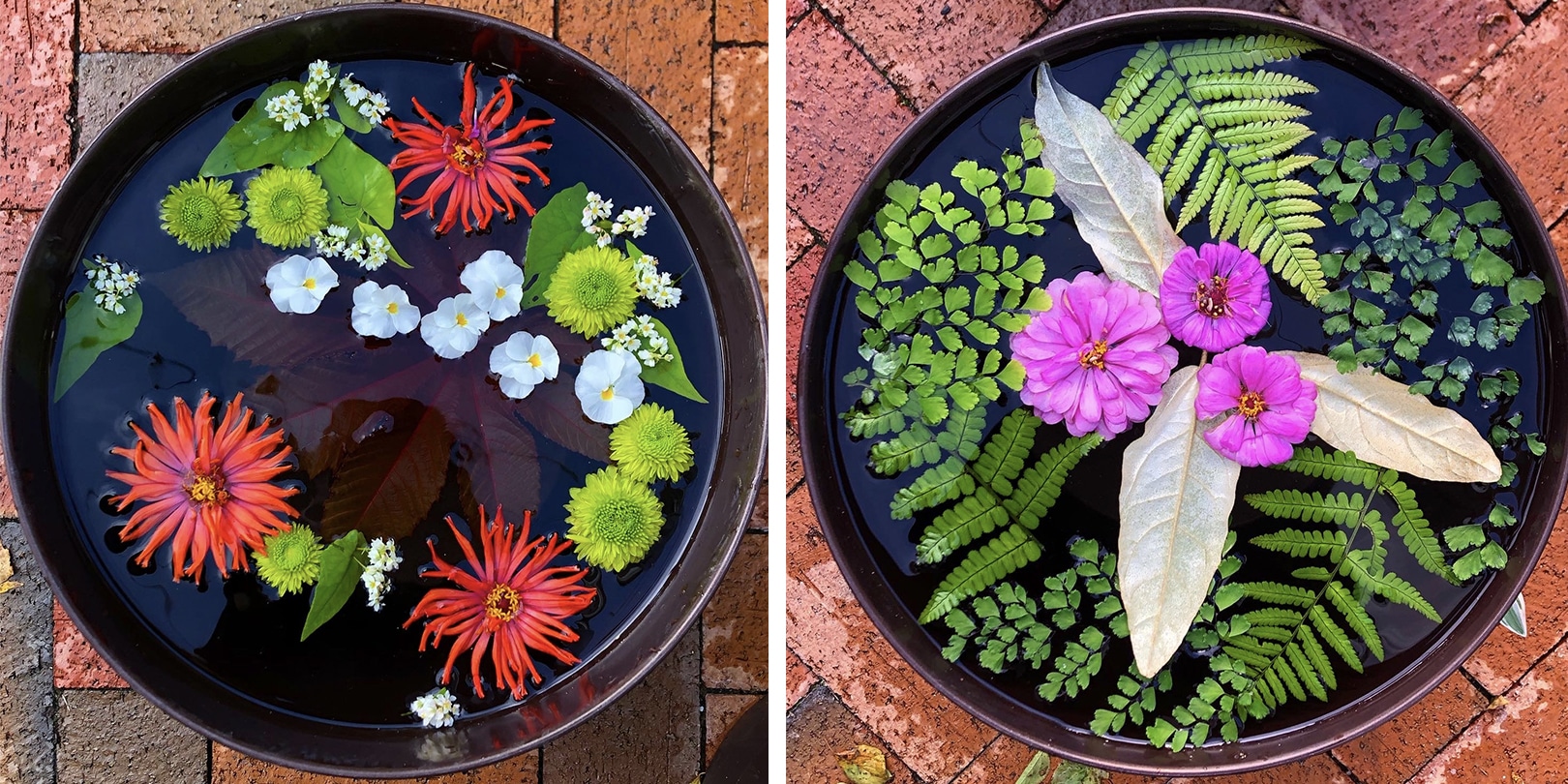Winter is a great season for container gardening. With seemingly endless possibilities you can be creative with your plant selections. This is a fun way to add interest to patios and porches or spice up a boring spot in your landscape. This gardening practice is for EVERYONE, especially with stylish Crescent Gardens pots!
Container gardening through the cool season is an excellent way to extend your seasonal interest and harvest opportunities. Consider mixing in a few of your favorite winter edibles alongside colorful flowers and foliage to maximize the impact.

Growing frost-tolerant plants during winter
This winter, the Madison planters will be the stars of the driveway garden. Flanking a vertical wall planted with Barley, these large containers are filled with frost tolerant specimens including Violas, Parsley, Snapdragons, Swiss Chard, Thyme, and Cardoons. Sited in full sun with extra ambient heat from the concrete driveway, these containers will require limited maintenance through the winter season. Water only as needed, if the plants begin to wilt, and fertilize sparingly to ensure nothing flushes with tender new growth hat could get nipped by cold.

Combining florals and edibles in Madison planter
Another showcase in my cool season container gardening foodscape is the Nest planter which is bursting with delicious Russian Red Kale and Barley. This combination will look great through the winter season and ultimately bloom in spring creating a dynamic display!

Red Kale and Barley growing in a self-watering TruDrop Nest planter
GETTING CREATIVE THROUGH THE COOL SEASON
Not all winter interest containers require soil and planting! In fact, one of my favorite activities through the cool season is to create floating arrangements. These are a wonderful way to create unique displays that are sure to impress family and friends.
I saw these first at Chanticleer Garden and was captivated by the dynamic displays. Initially it seemed these would be too much maintenance, but upon further reflection I decided to give it a try. From the very first combination I was hooked, and I think you will be too! The process is super easy and there are no limits to what you can create!

HOW TO MAKE FLOATING ARRANGEMENTS
In four simple steps you can create a one-of-a-kind arrangement.
- Find a bucket or pot with no holes. Any size works!
- Fill it with water
- Gather flower and leaves
- Float your collection and ENJOY!
WHAT TIME OF YEAR IS BEST? You can make these arrangements any time of the year. In colder climates, this is probably better when temps are above 32F. Here in zone 7 and warmer, we can float flowers ALL WINTER.
I make floating arrangements through the cool season for a few reasons. First, these pots are used for growing rice through the summer. Additionally, the summer heat causes the plants to decay faster making this practice short lived. Another concern is mosquitoes, which are far less trouble through the cool months.
Another reason I encourage this mindful practice through the winter months, is that with cooler temperatures the arrangements last a lot longer. By using plastic, solid bottom Crescent Garden containers you can enjoy your designs even through snow, ice, and freezing temperatures!
This year I have 2 Eva planters set up for floating arrangements from October-April on my back deck. In central NC we freeze almost every night in December-February and often get snow and ice. That is no problem for these winter floating designs. In fact, over the years I have had arrangements freeze in place and still last for up to 2 weeks thanks to the colder temperatures!
WHERE SHOULD YOU PLACE THEM?
Place your floating arrangements close to a water source! This will make upkeep easy. They can be sited in any exposure but be aware that sunny locations will cause the water to heat up more quickly and which results in faster decomposition of the plant material. Shady locations will keep the designs looking fresh longer.
Yes, this can be done inside! In fact, that is where I first started floating flowers, specifically Camellias and fragrant Edgeworthia. But the heat of your house will make the flowers decompose rapidly. This is what lead me to take this practice outside. Plus, I can use larger vessels and make more interesting arrangements.
HOW OFTEN DO YOU CHANGE THE WATER? This depends on the time of year. In the cool season, the water needs to be changed less frequently because the material does not break down as quickly. My rule of thumb is to refresh the pots and allow water to overflow to get rid of any organic matter floating around. I use a pool net to clear out the old, decaying flowers. If a green ring starts to form, I dump the water out and scrub it clean.
In warmer weather I recommend the addition of a small amount of chlorine to ensure the water stays fresh and mosquito free!
These vessels are also a source of water for “wildlife” including my kitties. But I have also seen birds using them and am sure that nocturnal creatures like opossums and raccoons may also take a drink from them. For that reason, I try not to add chemicals or float poisonous plant material.
WHAT PLANTS WORK BEST? ALL PLANTS WORK! Some plants will last longer than others. It’s a fun experiment to see what blooms and leaves are the longest “lived”. You will discover this over time. Temperatures will play a big role in how the container garden performs. Variegated asltroemia foliage is one of my favorite “fillers” and camellia, chrysanthemum, hellebore, pansy, and viola blooms are other seasonal favorites to float.
I hope you will be inspired to get creative with your Crescent Garden containers this winter season! The sky is the limit for all that can be created.




